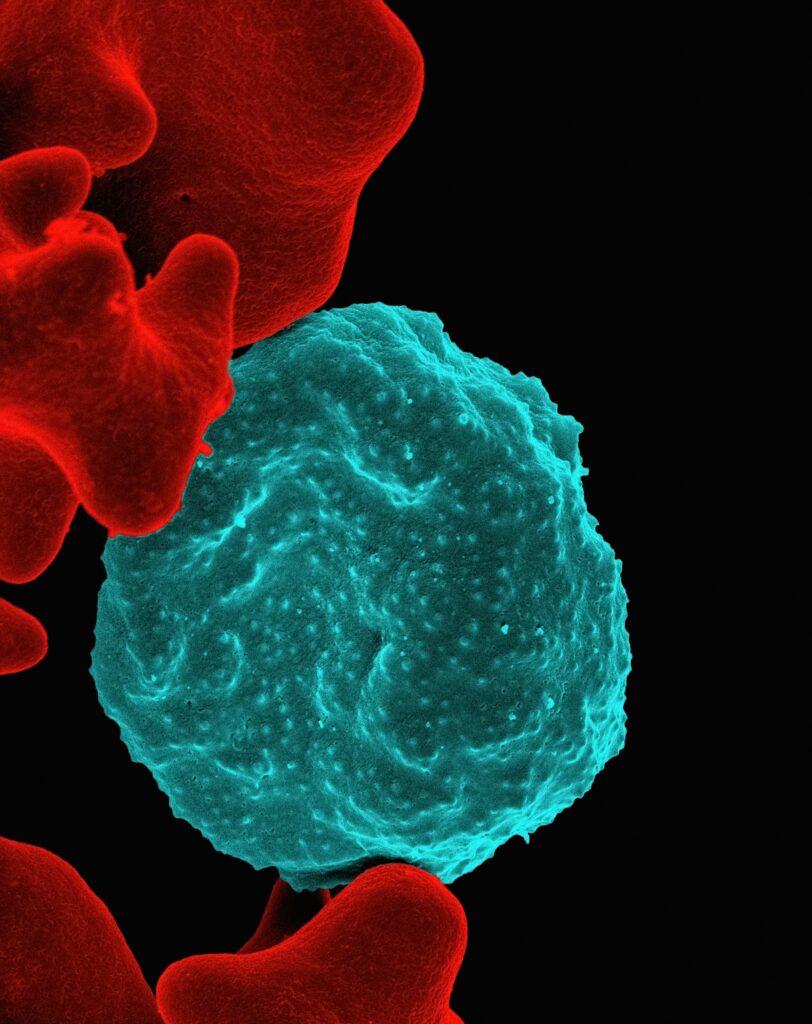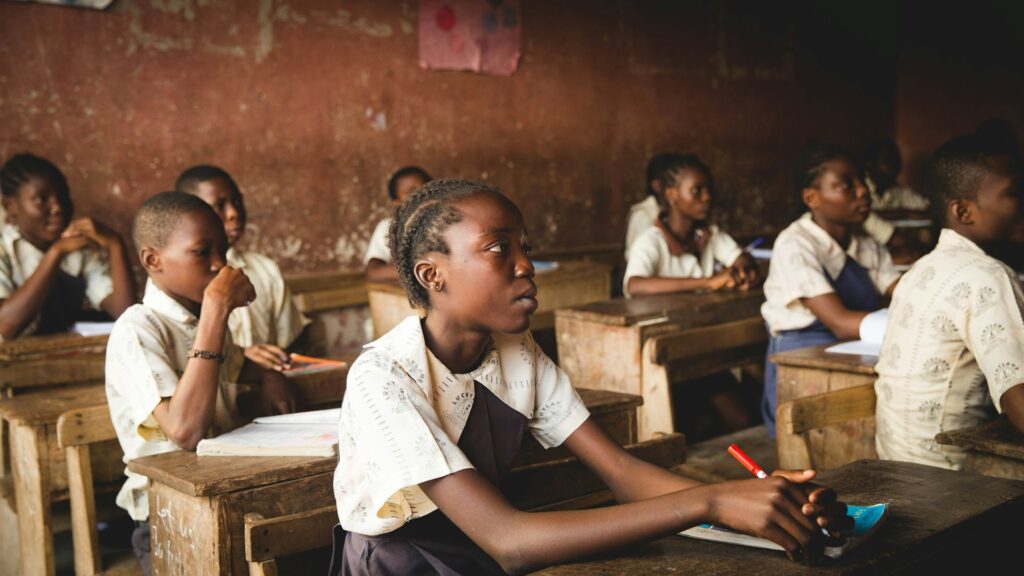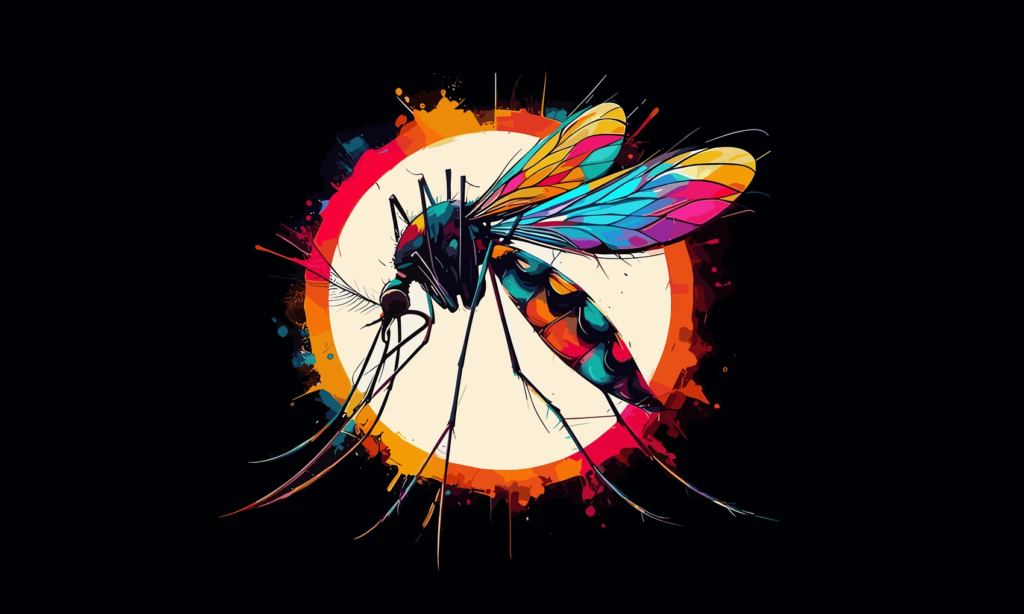Malaria is a disease that has plagued humanity since ancient times. In fact, reports of malaria symptoms are recorded as far back as 1550 BCE by ancient Egyptians and in ancient China sweet sagewort was used as a treatment.[1] Sadly, while some countries have been successful in eliminating the disease, malaria continues to be a leading cause of death. Did you know that in 2022 there were some 249 million cases globally, and 608,000 deaths? Most deaths were of children under 5.

The Disease
Malaria is a mosquito-borne parasite endemic to the tropics. Fever, head and body aches, and difficulty breathing are all symptoms, as are extreme fatigue, convulsions, and anemia. Besides young children, pregnant women and people suffering from HIV or AIDS are the most at-risk for severe infection and death. Interestingly, sickle cell is a genetic disorder that has actually evolved as a resistance to severe forms of malaria.
Want to Know More about Malaria and Sickle Cell?
Check out this verywell health article!
Africa has the most incidents of malaria in the world. In fact, 94% of the global cases in 2022, as well as 95% of deaths, were in that region. Nigeria alone, the most populous country in Africa, accounted for a quarter of the world’s malaria cases in 2017.
Want to Know More about Malaria?
Check out this WHO Fact Sheet!
A Vicious Cycle
Malaria is, of course, both treatable and preventable. Vaccines, screens or nets, pesticides, and mosquito coils are all variously effective means of preventing the disease – and they all require varying amounts of money. Besides having the heaviest malaria burden, Africa is also the poorest continent in the world. You could say there is a correlation, a vicious cycle of poverty and illness. In Nigeria, for example, some 40% of the population lives beneath the national poverty line, and 63% experience multidimensional poverty.[2]
Heavy healthcare burdens have major impacts when it comes to a country’s wealth and human capital. On a basic, global scale, for example, high incidents of malaria can discourage tourism. foreign trade, and investment that could invigorate a country’s economy.

The burden of malaria takes its toll on individuals and families, too, and destroys the vitality needed to thrive. Perhaps most obvious, acute symptoms such make productivity difficult to impossible, thus reducing a family’s present and future resources. Education is especially hard hit. Absenteeism and school dropout rates among infected children are high. There is also evidence to suggest that malaria may permanently affect the development and cognitive function of children born of infected mothers as well as in children who have themselves been infected. Consider, too, that in conjunction with reduced earning comes the cost of treatment. Resources that could have gone toward education for healthy family members are instead diverted when malaria strikes. Women are especially disadvantaged. Did you realize that in areas with tragically high infant and child mortality, fertility rates tend to be correspondingly high? As most of a woman’s productive years are wholly taken with child rearing activities, these areas take little interest in educating their female population.
The disease itself can be the beginnings of a slippery slope. Resulting chronic health issues, such as anemia, which requires frequent blood transfusions, continually put a patient’s health at risk. Poor healthcare conditions often expose transfusion patients to further blood-borne diseases, such as Hepatitis B and C, or HIV. In fact, as many as 25% of pediatric HIV infection in sub-Saharan Africa are the result of blood transfusions treating severe anemia and sickle cell anemia.
If intense malaria results in considerable negative impact on economic growth, any reduction in this burden can ultimately promote a cycle of health and wealth that may improve standards of living.
Presidents Battling Malaria
In 2005, American President George W. Bush launched PMI – the President’s Malaria Initiative – which has been sustained by every president since. Created to reduce the burden of malaria on the African continent, it has grown from 15 partner countries to 24 African countries as well as three programs in Southeast Asia combatting antimalarial drug resistance. The program continues to expand, too, and will soon include Burundi, The Gambia, and Togo.
PMI delivers cost-effective, life-saving malaria interventions alongside catalytic technical and operational assistance to equip and empower partner countries to end malaria.
– President’s Malaria Initiative
Teamed with USAID, PMI is more than a vaccine campaign. The program also provides mosquito nets and ensures homes are sprayed with insecticides and focuses on improving education, productivity and economic development in partnering countries. They are key investors in malaria research and train health professionals. Since 2000, this program has prevented 2.1 billion malaria infections.
Blackbird Global and Africa Health Link
Like PMI, Blackbird is focused on improving multiple facets of low-income situations. Working with Africa Health Link, we are installing hPods throughout The Gambia and sub-Saharan Africa. These kiosks have the potential to improve many health concerns from monitoring chronic conditions to screening for breast cancer. When it comes to malaria, one of the key benefits they provide is granting access to swift screenings, which will allow this life-threatening disease to be diagnosed and treated in its earliest phases and reduce the likelihood of serious illness and consequences.
Powered by a cloud-based platform, the hPod database also provides invaluable information for national health professionals and policy makers, providing information on the number of people testing positive, when, where, etc. The kiosk will also guide patients who test positive through a questionnaire about their symptoms and living conditions – gathering vital information about the availability and efficacy of preventions. This detailed, real-time information will help to development of further preventive and treatment programs in the ongoing fight against malaria.
You can help!
Every donation helps us deliver this life-saving technology to the remotest, poorest areas of Africa! Donate Today!
Further Sources:
https://www.ncbi.nlm.nih.gov/pmc/articles/PMC6617065/
https://blogs.worldbank.org/en/opendata/tackling-poverty-multiple-dimensions-proving-ground-nigeria
[1] https://www.scientificamerican.com/article/when-was-malaria-first-di/
